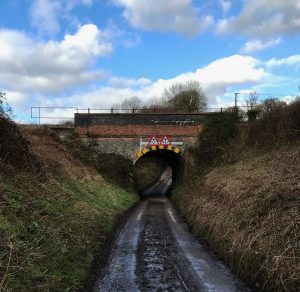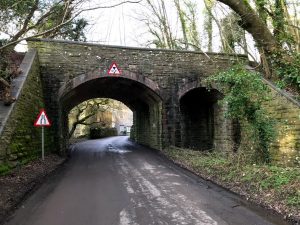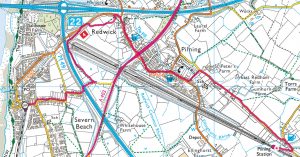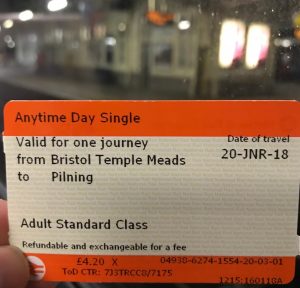My second Station to Station walk was between Castle Cary and Bruton – a walk that took me about 2 hours on foot and about 7 minutes back on the train!
I really don’t know very much about the town of Castle Cary, despite driving past it every day on my commute. I didn’t learn much about it today since the station is outside the town and my route took me around the outskirts through the adjoining village of Ansford.
From this point on the walk follows the Leland trail, named after John Leland, librarian to King Henry VIII. This trail is a reconstruction of part of the route he took when visiting South Somerset between 1535 and 1543 cataloging the contents of monastic libraries and antiquities. Sounds like a great job to me.
I deliberately chose this route to walk along a track that I’ve noticed almost every day and wondered where it went – Solomon’s Lane. I do this a lot with footpaths. It transpires that until the road slightly further south was turnpiked in 1793, this was the main route to Bruton [1]. It doesn’t look much today. I wonder who Solomon was?
At the end of Solomon’s Lane, the path continues across some lovely Somerset countryside. Some slightly grumpy cows didn’t really want to move, so I walked off route a bit to give them some more room. The path continues through an orchard before arriving back at the road near to the village of Cole.
After passing under the current railway line, the road eventually passes under another bridge that once carried the Somerset and Dorset Joint Railway on its route from Evercreech to Cole. There isn’t that much left to see of it in this area, but it does seem to haunt all my walks. By the way, this bridge is labelled SAD-116, and another one that the road passes over SAD-115. I’m not sure whether these labels are original or not, but I can feel a box ticking exercise coming on.
The last part of the walk is across the wide open fields of Wyke Farm, and finally down a well trodden lane into Bruton itself. Bruton is a very pretty town, full of history and tradition. It’s also, well, I can’t quite find the word – posh isn’t quite it, nor does hipster quite cover it. The fact that the Spar sells craft beer and Quinoa crisps maybe sums it up. I like it, by the way.
Frustratingly, I hadn’t left myself enough time to visit either of the pubs along the High Street, nor to pop into the museum. I fully intend to do this walk again, but using a more direct (hence quicker) route so that I can explore the town itself a bit more. This time I just headed straight for the station.
Bruton station is pretty quiet. (40660 entries and exits in 2016-17: 111 people a day). It was originally built as part of the Wilts, Somerset and Weymouth Railway, opening in 1856. These days it has a sporadic service through the day – not regular. Hence the importance of catching my particular train, otherwise I had a 2 hour wait.
And so finally back to Castle Cary station, which sits astride the Taunton to Reading Line and the Bristol to Weymouth Line. It has a large (and quite cheap) car park to attract commuters, which is often quite full. However, the station really comes in to its own for the Glastonbury festival, when for a long weekend it is absolutely heaving – and well worth avoiding if you are not a festival goer.
Post walk note – I left my camera on a stile in the middle of this walk. I had to drive to a point as close to it as I could get and walk through the muddiest field I have ever seen in the vain hope that it might still be there. It wasn’t. However, a very kind woman had just picked it up for safe keeping and saw me striding with purpose and guessed it might be mine. And so I was reunited! I am incredibly grateful for kind strangers.
[1] ‘Ansford’, in A History of the County of Somerset: Volume 10, ed. Mary Siraut (Woodbridge, 2010), pp. 85-100. British History Online http://www.british-history.ac.uk/vch/som/vol10/pp85-100 [accessed 4 February 2018].





















